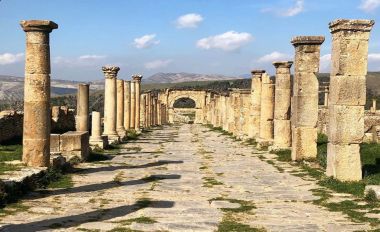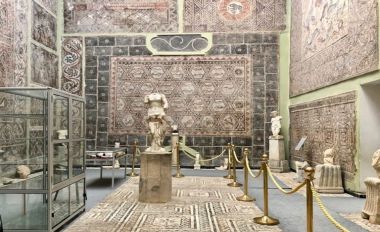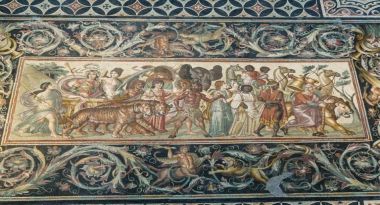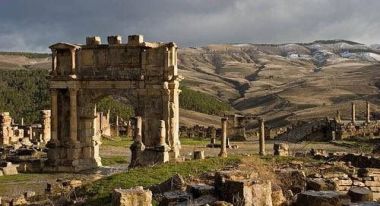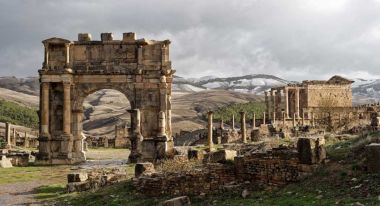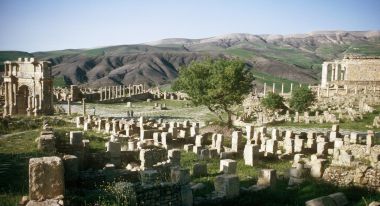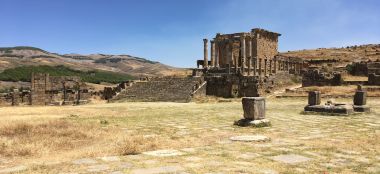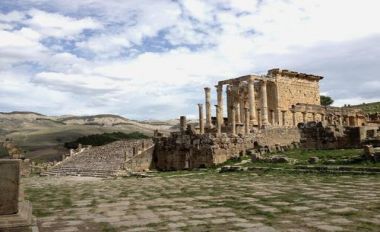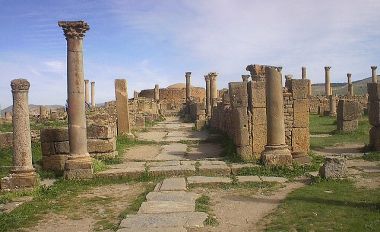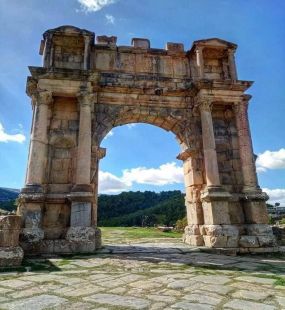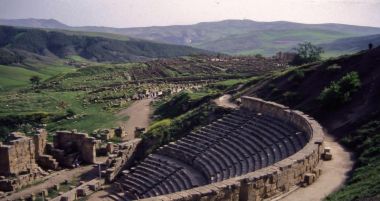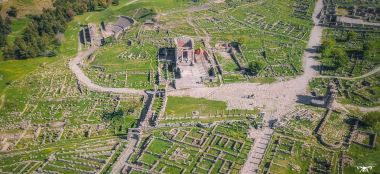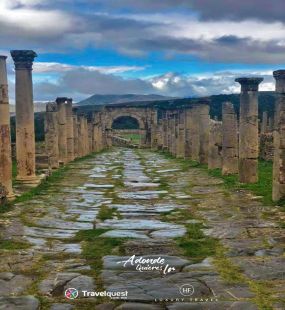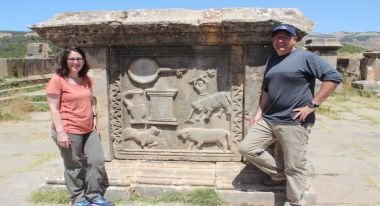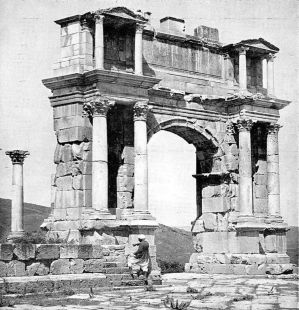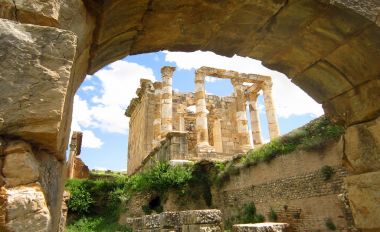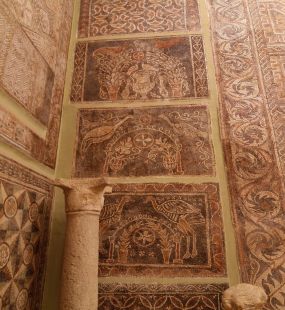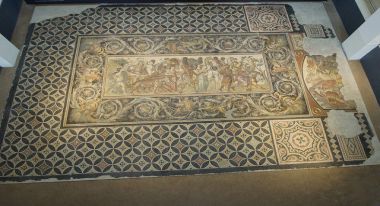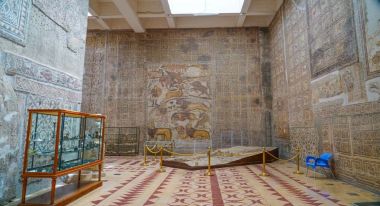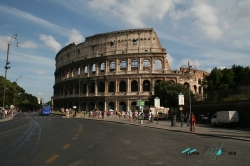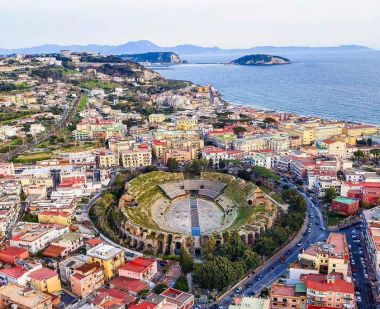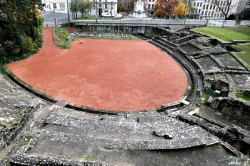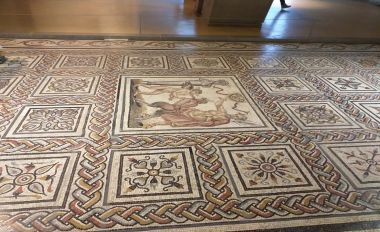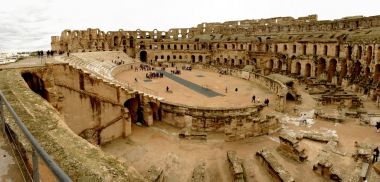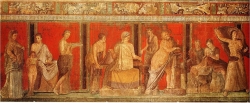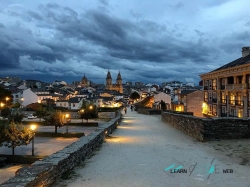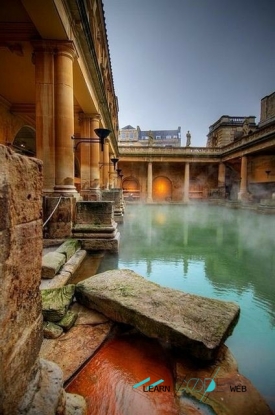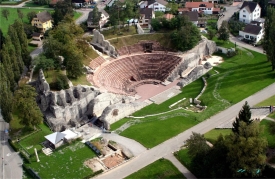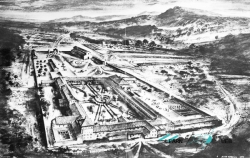ABOUT Djemila
Djémila, originally known as Cuicul, is one of Algeria’s most remarkable UNESCO World Heritage Sites, showcasing the legacy of Roman civilization in North Africa. Founded in the 1st century AD, this ancient city served as a Roman military outpost situated approximately 900 meters (3,000 feet) above sea level on a narrow plateau in the province of Numidia. Djémila’s scenic mountainous landscape, located at the meeting point of two rivers, adds to the site’s unique allure and offers visitors a glimpse into the architectural and cultural prowess of the Roman Empire.
Built with a typical Roman layout, Cuicul’s design centered around two primary roads: the Cardo Maximus and the Decumanus Maximus. These streets intersected at the forum, the city’s social and economic hub. Originally settled by Roman soldiers from Italy, Cuicul quickly expanded as an agricultural and trading center, prospering through its fertile lands rich with cereal grains and olive groves. Over time, it grew into a bustling urban environment that blended Roman urban planning with the natural topography of the region.
During the reign of Emperor Caracalla in the 3rd century, Cuicul underwent significant expansion. The city’s administrators constructed a new, grander forum with impressive buildings, contrasting with the smaller, more modest structures surrounding the original forum. Due to the limitations imposed by the rugged terrain, the theater was uniquely built outside the city walls—an uncommon practice in Roman urban design that reflected the architectural adaptability of Cuicul’s planners.
By the 4th century AD, Christianity had gained popularity in Cuicul, leading to the establishment of a Christian quarter. This area, located south of the main urban settlement, was home to three basilicas, a baptistery, and other religious structures, including auxiliary rooms, baths, and a peristyle house. This district became a central area for worship and remains a popular site for visitors exploring Djémila’s ancient Christian heritage.
Historical records reveal that several bishops represented Cuicul in notable councils, such as the Council of Carthage in 255 and the Second Council of Constantinople in 553. This underlines the city’s religious significance during late antiquity, with bishops like Pudentianus and Cresconius playing key roles in early Christian debates, especially regarding heretical baptism.
Djémila offers an immersive experience for those interested in Roman history, with its temples, forums, markets, and baths presenting an authentic slice of Roman provincial life. Walking through the ruins, visitors can witness the remarkable fusion of Roman engineering and natural beauty that defines Djémila, one of the best-preserved Roman sites in North Africa. Its ecclesiastical quarter, the grand theater, and the meticulously designed forums all serve as testaments to Roman influence, ingenuity, and resilience in this region.
The ancient ruins of Djémila, or Cuicul, reflect a captivating chapter in the Roman Empire’s expansion into North Africa. From military outpost to thriving agricultural hub, from the rise of Christianity to its role in early ecclesiastical councils, Djémila is a unique cultural treasure for historians, archaeologists, and travelers alike. As preservation efforts continue, the historical value of Djémila will endure, allowing us to understand and appreciate the depths of Roman civilization on African soil.
Built with a typical Roman layout, Cuicul’s design centered around two primary roads: the Cardo Maximus and the Decumanus Maximus. These streets intersected at the forum, the city’s social and economic hub. Originally settled by Roman soldiers from Italy, Cuicul quickly expanded as an agricultural and trading center, prospering through its fertile lands rich with cereal grains and olive groves. Over time, it grew into a bustling urban environment that blended Roman urban planning with the natural topography of the region.
During the reign of Emperor Caracalla in the 3rd century, Cuicul underwent significant expansion. The city’s administrators constructed a new, grander forum with impressive buildings, contrasting with the smaller, more modest structures surrounding the original forum. Due to the limitations imposed by the rugged terrain, the theater was uniquely built outside the city walls—an uncommon practice in Roman urban design that reflected the architectural adaptability of Cuicul’s planners.
By the 4th century AD, Christianity had gained popularity in Cuicul, leading to the establishment of a Christian quarter. This area, located south of the main urban settlement, was home to three basilicas, a baptistery, and other religious structures, including auxiliary rooms, baths, and a peristyle house. This district became a central area for worship and remains a popular site for visitors exploring Djémila’s ancient Christian heritage.
Historical records reveal that several bishops represented Cuicul in notable councils, such as the Council of Carthage in 255 and the Second Council of Constantinople in 553. This underlines the city’s religious significance during late antiquity, with bishops like Pudentianus and Cresconius playing key roles in early Christian debates, especially regarding heretical baptism.
The Decline of Cuicul and Djémila’s Preservation
Cuicul gradually fell into decline with the collapse of the Western Roman Empire in the 5th and 6th centuries. Briefly revitalized under Emperor Justinian I, who reinforced the city walls, Cuicul eventually faced abandonment, with the Muslim conquest renaming the site Djémila, meaning “beautiful” in Arabic, while avoiding settlement in the original Roman structures. The city remained well-preserved due to minimal reoccupation, enabling modern historians and archaeologists to gain valuable insights into its urban and cultural composition.Preservation Efforts
In 2009, Djémila underwent extensive spatial documentation by the Zamani Project in collaboration with the University of Setif and the South African National Research Foundation (NRF). This project used 3D mapping to digitally preserve significant structures, including the Caracalla Gate, the Market, the Temple of Septimius Severus, and the Theatre. This initiative plays a vital role in the ongoing preservation of Djémila, making its architectural legacy accessible to future generations.Djémila offers an immersive experience for those interested in Roman history, with its temples, forums, markets, and baths presenting an authentic slice of Roman provincial life. Walking through the ruins, visitors can witness the remarkable fusion of Roman engineering and natural beauty that defines Djémila, one of the best-preserved Roman sites in North Africa. Its ecclesiastical quarter, the grand theater, and the meticulously designed forums all serve as testaments to Roman influence, ingenuity, and resilience in this region.
The ancient ruins of Djémila, or Cuicul, reflect a captivating chapter in the Roman Empire’s expansion into North Africa. From military outpost to thriving agricultural hub, from the rise of Christianity to its role in early ecclesiastical councils, Djémila is a unique cultural treasure for historians, archaeologists, and travelers alike. As preservation efforts continue, the historical value of Djémila will endure, allowing us to understand and appreciate the depths of Roman civilization on African soil.
The Best Pictures of Djemila
Videos of Djemila









